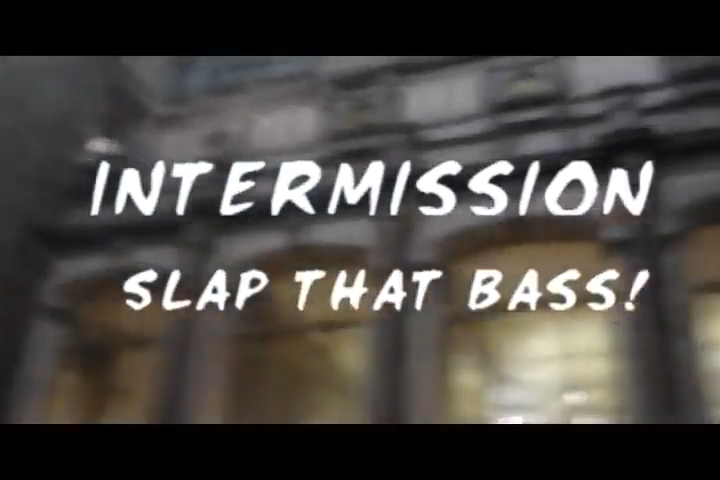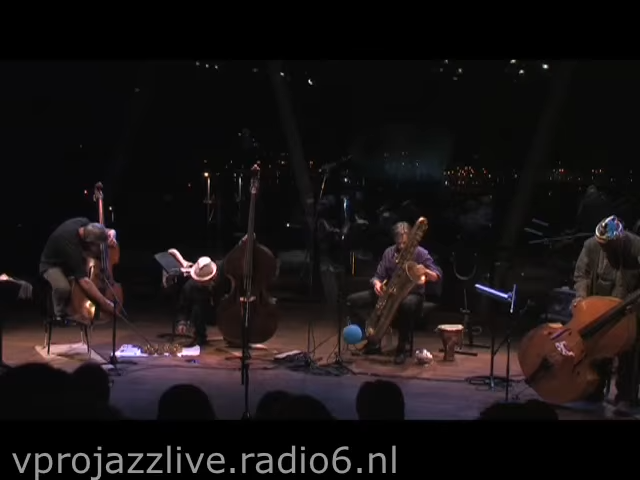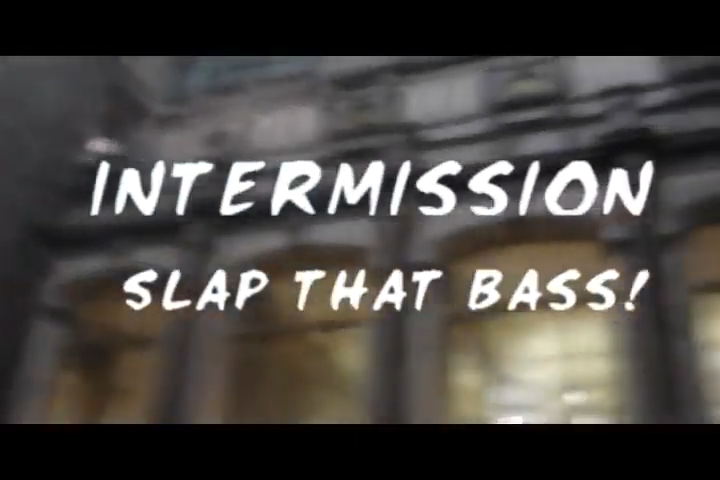Intermission
Klaas Hekman saxophone, Wilbert de Joode bass, William Parker bass, Hideji Taninaka bass
The quartet Intermission is conceptually severe: three contrabasses and organizer Klaas Hekman’s bass saxophone. They get as low to the ground as any band anywhere. Rumbling underground moans unfold without haste, like a tape of Ligeti strings played at the wrong speed.
“Intermission” “pauze” was Duke Ellington’s deprecatory slang for “bass solo,” but the band avoids jazzy gestures: no 4/4 bass walking tonight. By conscious choice, it’s a music of texture more than form, a risky business.
Duke Ellington riep altijd `Intermission’ (pauze) als aankondiging van een solo voor contrabas, omdat in het geroezemoes van het publiek de lage klanken toch nauwelijks te horen waren.
Bij het lage tonen-kwartet Intermission is het nadrukkelijk wel te bedoeling dat het lage geluid in al zijn brede schakeringen en fijnste finesse gehoord wordt.
Intermission begon eind 1994 als éénmalig project. Het resultaat beviel zo goed dat een jaar later een tweede tour langs de Nederlandse podia werd gemaakt. Het laatste concert werd opgenomen en uitgezonden door de VPRO-radio. Deze opnamen, gecombineerd met opnamen van de eerste tournee, verschenen op de cd `Song of low Songs'(BVHAAST 9612). Van het project van Intermission met gitarist Derek Bailey en pianist Chris Burn verscheen juli 1999 de cd `Unanswered Questions'(BVHAAST 9906).
“Het kwartet Intermission zit stevig in elkaar: drie contrabassen en de bassaxofoon van organisator Klaas Hekman. Het gaat zo ver de diepte in als maar kan. Rommelende ondergrondse kreten ontvouwen zich zonder haast, als een bandopname van Ligeti-strijkers op verkeerde snelheid afgespeeld”, schreef De Volkskrant. ‘Dynamiek op de vierkante centimeter’ schreef de NRC 22-1-2000 over CD Unanswered Questions. ‘Improvisatie op het scherpst van de snede’ JazzNu september 1999. ‘Intermission have carved out a niche for themselves in the sometimes antseptic world of group improv’, Art Lange in The Wire oktober 1999.
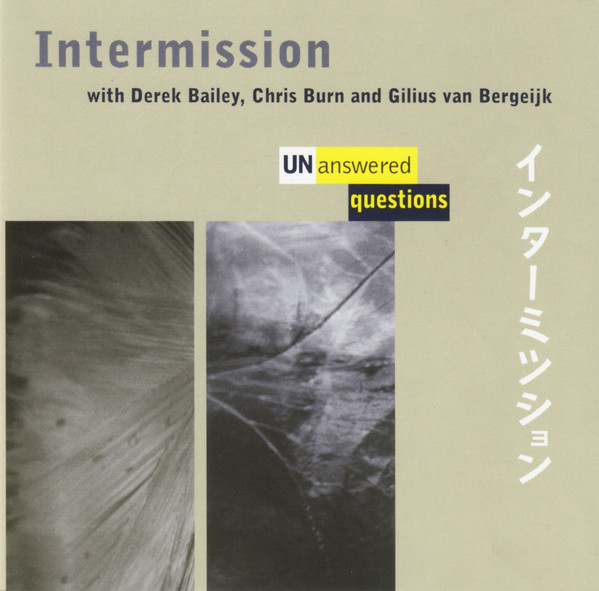
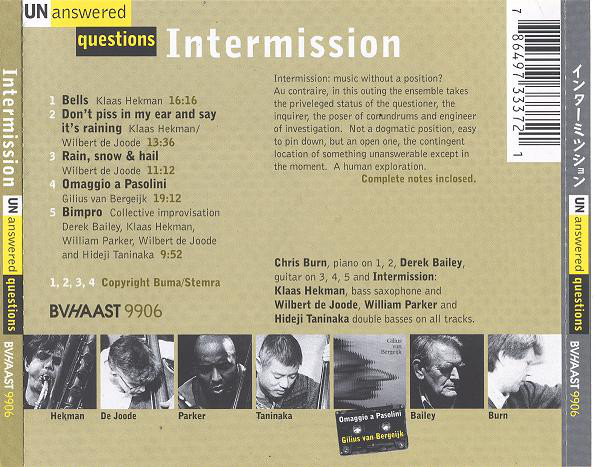
CD: Unanswered Questions
Released: 1999
Label: BVHAAST 9906
Distributor: BV HAAST
Code: 86497 33372
Description: ‘Intermission : Music without a position? Au contraire, in this outing the ensemble takes the priveleged status of the questioner, the inquirer, the poser of conundrums and engineer of investigation…A Human exploration.’ John Corbett january 1999
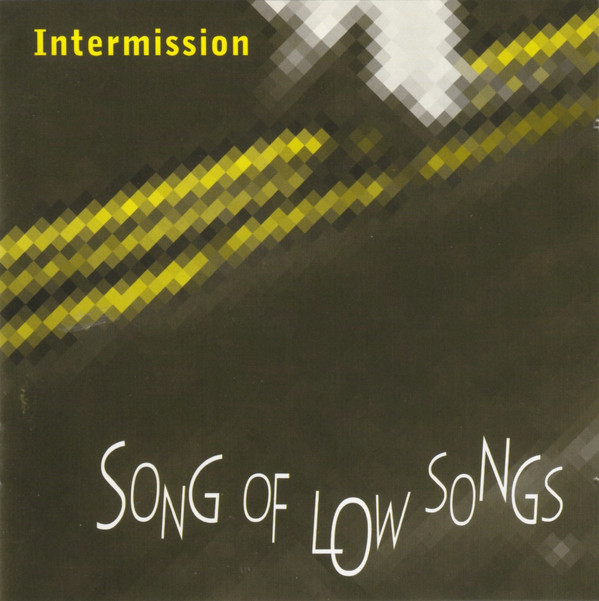
CD: Song Of Low Songs
Released: 1996
Label: BVHaast
Code: CD 9612
Description: ‘These fellas are each schooled in making ensembles work, whatever the lineup, so they come up with a fascinating mix, even when all playing fast pizz in open time. Sounds best at very high volume – feel the deep boneshake. ‘DOWN BEAT**** oct. 1997
Description:
Part of Intermission’s implicit mission is teaching you to listen to interwoven lows, sorting them out and discovering as you do the audible differences in three string player’s bowing or pizz styles. That, and the many voices of bass sax, relic of jazz’s earliest days (when it or tuba might be a band’s bass) which in Hekman’s hands reflects not just Adrian Rollini’s slaptongue percussives, but later saxophone refinements too- ben Webster’s gentle caresses, Illinois Jacquet barking R&B bari, SunRa’s 50’s walks for the same horn, Kirk’s precision frictive splittones- as well the European wind music for which saxophone was invented. Part of Kevin Whitehead’s linernotes july 1996
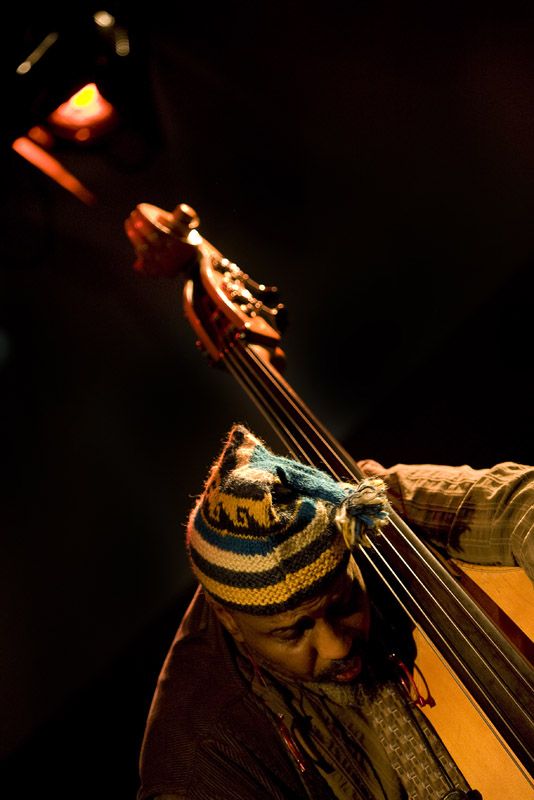
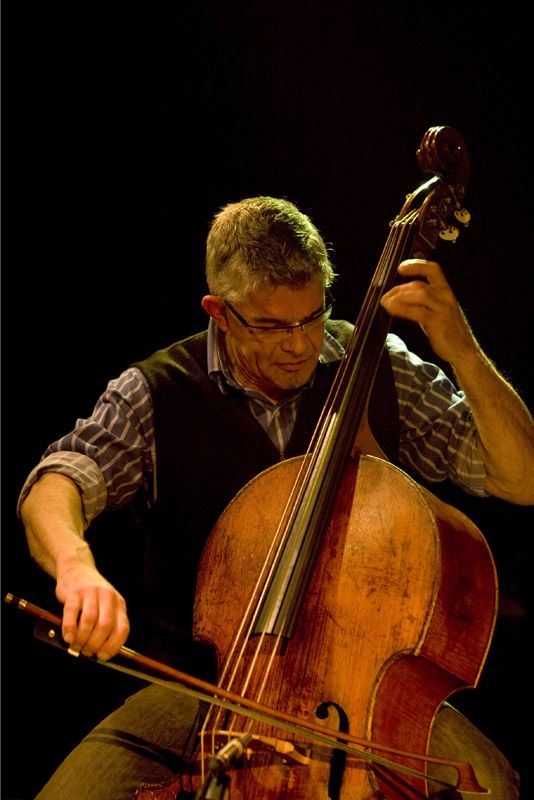
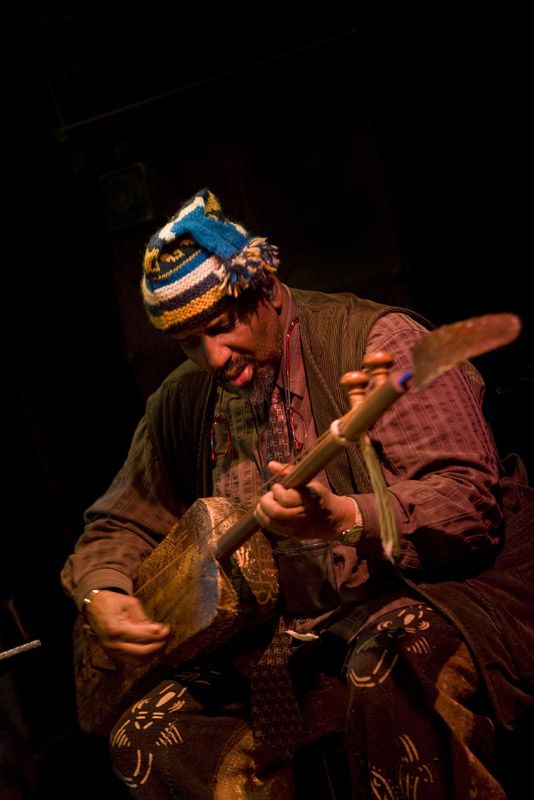
Review about Unanswered Questions Intemission’s third tour in Holland with special guests Derek Bailey and Chris Burn
De Volkskrant april- 3-1998
Intermission “Unanswered Questions.”
Dodorama, Rotterdam, 1 April.
The quartet Intermission is conceptually severe: three contrabasses and organizer Klaas Hekman’s bass saxophone. They get as low to the ground as any band anywhere. Rumbling underground moans unfold without haste, like a tape of Ligeti strings played at the wrong speed.
“Intermission” “pauze” was Duke Ellington’s deprecatory slang for “bass solo,” but the band avoids jazzy gestures: no 4/4 bass walking tonight. By conscious choice, it’s a music of texture more than form, a risky business.
Sometimes pieces start frenetically and then drain of energy, musical entropy.
For their third Dutch tourneé, dubbed “Unanswered Questions,” Intermission wrecks its own conceptual purity by inviting in polar opposites: English guitarist Derek Bailey, crusader for totally unfettered improvisation, and Hague composer Gilius van Bergeijk, in whose pieces each
moment may address an ultimate goal. Both were excellent choices.
Bailey, guest on most of the program, is even more committed to free improvisation than they are. The “compositions” Intermission’s members contribute are less thematic material than points of departure, setting them loose in one or another sonic area.
One piece started with three arco basses, another all pizzicato, to give a simple example; on another, Hekman blew into bass sax with trumpet embouchure, without reed or mouthpiece, getting a wistful sound like Israeli shofar or bass flute.
But even such rudimentary structure is too much for Bailey, who prefers to wing it. On first hearing, he sounds like he’s splintering his amplified hollow body guitar into bits. He likes small sounds: ringing harmonics shaped with a volume pedal, rude chords swept away as soon as they’re voiced. (Rejecting conventional style, Bailey in effect created a new style, imitated by guitarists around the world.) His sparse, spiky, sometimes high pitched pointillism is ready made contrast to what Intermission plays, but he is instinctive contrapuntist in any setting. Confronted with Intermission’s own avoidance of form, at one point in Dodorama this anti composer fell into a rising and falling two chord sequence, just to go against the grain. (In Dordrecht and Breda, he’ll be replaced by English pianist Chris Burn, an interpreter turned improviser, said to favour a Bailey like approach.)
For all his unorthodox sounds, in ensemble Bailey is often an incisive rhythm guitarist, booting the other players along. Playing duos with Han Bennink for 30 years hasn’t hurt his timing. Indeed, he often favors a percussive attack, as do Zaans bassist Wilbert de Joode and his New York alter ego William Parker. For that matter, Hekman gets brushes on snare drum effects, blowing air through his mouthpiece in rhythm, a Ben Webster technique used to very different effect. (Bassist Hideji Taninaka, another New Yorker, is the band’s least assertive presence.)
As composer, Gilius van Bergeijk is a sardonic deconstructionist by inclination, but his Omaggio a Pasolini inspired by the filmmaker’s use of montage, the composer says put him at the service of the basic quartet, presenting them with a series of taped, distortion laden episodes they might improvise with, or against, or leave to sound on their own. The players let a loud noisy sequence drown them out, entered into quasi dialogue with the more spare passages, and blended bowed harmonics with high whirly or low grumbly bits, till you can’t tell if a sound was live or taped.
The shifting focus of Pasolini ‘s montage led them from one strategy or textural area to another faster than they go on their own, giving them a sense of direction the open improvising sometimes lacks. The benefits were immediate.
The following, final quintet improvisation was the briskest, most finely detailed, most attractively shaped of the evening the fullest realization of the unit’s capabilities with even Bailey consciously or unconsciously echoing sounds from van Bergeijk’s tape.
Kevin Whitehead
